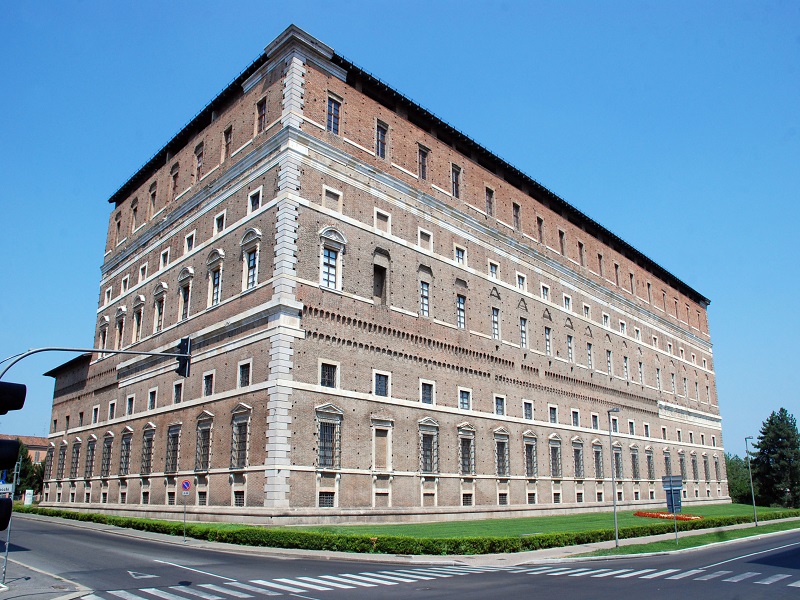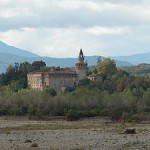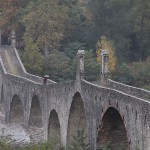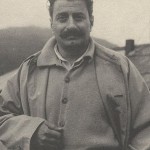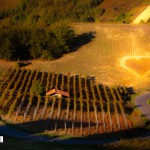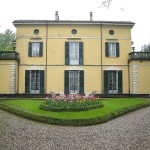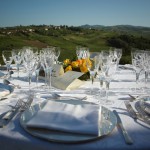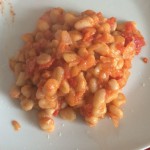Palazzo Farnese
HISTORY
Palazzo Farnese is no doubt the symbol of Piacenza: Duchesse Margherita d’Austria (1522-1586 ), wife of Ottavio Farnese, after whom the palace was named, ordered its construction and in the middle of the 1500’, was part of the majestic Citadella Viscontea, and official residence of the family. The architect Jacopo Barozzi, known as “Vignola” designed the palace. Today the palace stands in the northern part of the town and is witness of the magnificence and power of the ducal family and hosts the Musei Civici and State Archives.
A greatly valued touristic site, the Palace and its Museums are judged “Excellent” by visitors that have reviewed it on Trip Advisor with over a hundred enthusiastic comments, and is second on the list of places to visit in Piacenza, right after Piazza Cavalli, the historical piazza which hosts Town Hall, known as Il Gotico, and the two bronze Equestrian statues the work of Francesco Mochi ( 1580-1654 ).
Palazzo Farnese was the residence of the Duchesse of Parma and Piacenza, Margherita d’Austria, daughter of Carlo V, and she lived in the palace without her husband Ottavio who remained in Parma. The construction of the new majestic ducal residence was at first assigned to the architect Urbino Francesco Paciotto ( 1521-1591). In 1558, Paciotti proposed to build the Palace on the foundations of the old visconteo castle of Galeazzo Visconti, Duke of Milano in the year 1352. Many problems impeded the realization of this project, so the Dukes decided to assign the project to a second architect, well known to the family, Jacopo Barozzi, “Il Vignola” (1507- 1673). The ancient castle stood in a strategic position: close to the walls of the city and very close to the Pò river; this allowed strict control of the town and easy access to Lombardy and thus Milano by boat. History narrates that Pope Paolo III, in 1545, separated Piacenza and Parma from the Dukedom of Milano and established an autonomous Dukedom ( Dukedom of Parma and Piacenza ) assigned to Pierluigi Farnese, who chose Piacenza and the viscontea Cittadella, the only example of a military fortress , as his residence. The Duke decided to restore the Cittadella and assigned the project to Michelangelo and Antonio da Sangallo who were supposed to make the palace more functional and secure. Unfortunately the project was put aside owing to the conspiracy and subsequent violent death of Pierluigi, and the arrival of the Spanish Governor of Milamo, Ferrante I Gonzaga.
The second project dates to 1561 and is much more majestic: the four wings of the palace were enlarged and the courtyard was extended; the idea to build on the old viscontee foundations was abandoned because it was not feasible. Work ended in 1602: owing to the scarce economic resources of the Farnese family, the project was not fully completed: what we admire today is only half of the Vignola’s original project.
The end of the Farnese lineage caused several problems to the Palace, and thus decadence: passage of riches to the Borboni greatly impoverished the majestic palace. In 1734 Carlo di Borbone ( 1716-1788 ) who had become King of Naples, decided to transfer the paintings and furnishings of Palazzo Farnese to his residence in Naples .After the Borboni, in 1803 the troops of Napoleon ransacked the jewel of Piacenza, while during the Second World War the Palazzo became a refuge for evacuees. All this contributed to its decadence thus giving way to the creation of an Institution in 1965, which included Ente Provinciale per Il Turismo, Piacenza Municipality, The Province and the Chamber Of Commerce to form the Ente for the Restoration of Palazzo Farnese with the objective of restoring Palazzo Farnese to its ancient splendour. Senator Alberto Spigaroli was nominated President and withheld the position until his death in August 2014. The Palace ,state-owned, in 1976 was granted to the City of Piacenza that chose it as the site of the Civic Museum, inaugurated in 1988. At the end of 2014, the Palace officially became property of the City of Piacenza.
A long and arduous job to restore Palazzo Farnese to all its magnificence: firstly roofs and walls of the rooms in the east wing on the first three floors were restored, to then proceed to the meticulous cleaning of the splendid stuccos. The floors, of breathtaking beauty , were in part restored and where it was not possible to recuperate the original, skilfully reconstructed. The entire task of restoration went in the direction of “conserving”, in other words, the recuperation of as many original elements as possible. At the beginning of the 1990’s , the restoration of the rooms on the first floor ended and it was possible to host the art collection of the pinacoteca. In the same period, the very precious Cappella Ducale was restored , real pride of the Palazzo, as well as the cellar, the courtyard and the façade. Very slowly the ancient structure came back to life, for the pride of the citizens of Piacenza as well as art lovers. The restoration is not yet completed : the Palazzo, owing to its imposing size, continually requires maintenance to preserve its rediscovered splendor.
MUSEUMS
The civic museums are divided in ten sections: medieval frescos, archaeology, arms, carriages, farnese wealth, Etruscan liver, pinacoteca, Risorgimento, sculptures, glasses, ceramics.
- In the medieval section, in hall 6, it is possible to admire frescos that date to late middle ages, mostly religious subjects, recuperated from the churches of the city and its surroundings. In detail there are frescos from the chapel of Santa Caterina, from the northern apse of the Church of San Lorenzo, today deconsecrated, from the refectory of Santa Chiara and from the chapel of the Castle of Pontenure (PC). The frescos from the chapel of Santa Caterina are of particular interest and date to the end of the XIV century; coronation of the Virgin and Trinity, the work of Bartolomeo and Jacopino da Reggio 1355-60, a majestic fresco 241×312; The Celebration of Holy Mass, also painted by Bartolomeo and Jacopino da Regio in 1350, 211x 262.
- The archaeology section is divided in several parts, but only the sections dedicated to prehistory and protohistory can be visited. A scale model of the Province illustrates the origins of Piacenza, from the advent of man to the founding of Piacenza in 216 BC by the Romans. Lovers of history can view testimonies of ancient Paleolithic times, a vast collection of flint instruments from Mesolithic ages ( IX- VI BC ) and some products from Monte Lama. Next door, the halls which host findings dating to Neolithic ( VI-IV BC ), clothing, burial findings as well as grave goods. The Bronze Age offers various daggers, palafittes of Chiaravalle della Colomba and other findings from Colombare, Rovere, Montata dell’Orto and Castelnuovo Fogliani.
- The arms section hosts a real gem: the armor of Pompeo della Cesa made between 1580 and 1585. There are about four hundred different ancient arms belonging to Count Antonio Parma ( 1787- 1850 ).
- Striking and very impressive for visitors is the section dedicated to old carriages and some clothing. Over thirty well conserved carriages belonging to Count Silvestro Brondello are exhibited as well as other carriages up to the 1700’s.
- The section dedicated to the splendors of the Farnesi best illustrates the glory of the famous Farnesi lineage through the paintings that depict the life of the various members in particular moments. Divided in two sub-sections, one is a collection of paintings ordered by Ranuccio II and painted by Giovanni Evangelisti Draghi, Sebastiano Ricci and others, between 1685 and 1687, the other an interesting series of paintings that date to 1714 by Ilario Spolverini, including the matrimony of Elisabetta Farnese with Filippo V of Spain, celebrated in 1714.
- The section Etruscan liver hosts the model of a bronze liver of sheep found in 1877 in the Province of Piacenza. It is a very prestigious finding of great cultural and historic interest, because it illustrates the Etruscan religious rituals which scrutinized divine will by reading the liver of a sacrificed animal.
- The pinacoteca is a collection of rare beauties: paintings ranging from the XIV and up to the XIX centuries, come from churches of the Piacenza province and private collections. A must the Rizzi-Vaccari Collection, with paintings and sculptures ranging from the XIV up to the XVI centuries: the famous Tondo of Botticelli, Madonna in adoration of the Child with Saint Giovannino; the portrait of Giacomo Rota with his dog by Gaspare Landi (1798) and many more
- The section dedicated to the Risorgimento is divided in four halls: documents, pictures, memorabilia, and arms from the period between 1848 and 1861. Decrees, edicts, and original appeals of the 1859-60 period are on display including papers, etchings, lithographs and authentic letters of Garibaldi. Sculptures include unique pieces such as Madonna with Child dating to the XIII century, Telamone dating to the first half of the XII century, l’Agnus Dei , a sandstone high-relief dating to the first half of the XII century, the “del Benvegnu” sheet dating to the middle XIV century found in the Montechiaro castle.
- The last section, dedicated to glass and ceramics, is a collection within a collection: finely decorated objects, from Lombardy, Veneto and Emilia, dating to the XV ,XVI, XVII ,and XVIII centuries of breathtaking beauty. The collection of glasses, belonging to Pietro Agnelli, illustrates the techniques for making glass in Murano as of the XVI century.
Informations:
Musei di Palazzo Farnese, tel. 0523.492661 tel. 0523.492658
Musei Civici di Palazzo Farnese, piazza Cittadella 29 29121, Piacenza – Italy
Bibliography
AA.VV., Casa Farnese. Caprarola, Roma, Piacenza, Parma, Milano, 1994.
Leonardo Cafferini, Guida Turistica Piacenza e la sua Provincia, Castelvetero Piacentino, 2012.
